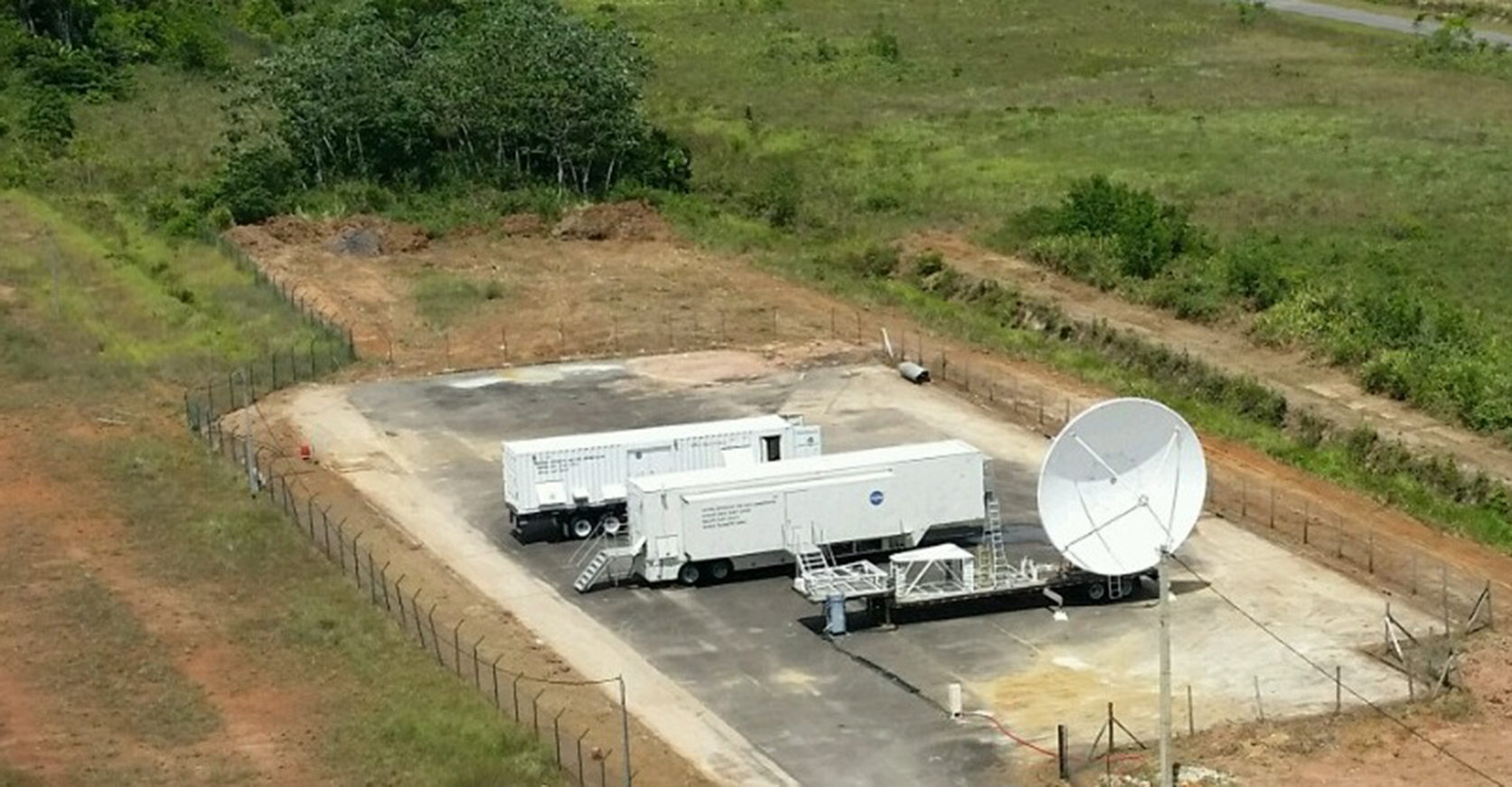When a rocket is launched, depending on its trajectory a downrange site may be required to track the rocket as it flies to space. Often an established tracking site is used. In other cases, one must be established.
In the case of the launch of the Cyclone Global Navigation Satellite System (CYGNSS) spacecraft, currently scheduled for Dec. 12 from Florida, the latter is needed.
NASA’s Wallops Flight Facility in Virginia has answered the call to set up shop and provide telemetry tracking services from the Felix Eboue Airport in French Guiana, South America.
CYGNSS, launching on an Orbital ATK Pegasus rocket from Cape Canaveral Air Force Station, is a NASA mission aimed at improving extreme weather prediction by utilizing a constellation of eight small satellites. The information gathered by CYGNSS will allow hurricane forecasters to improve weather forecast models used to predict both the track and intensity of land-falling hurricanes, thus aiding in the protection of human life and coastal community preparedness.
A downrange tracking site is required for this mission due to the specific launch trajectory and the need to have real-time spacecraft deployment information delivered back to Florida during the launch.
Steven Kremer, Chief of the Range and Mission Management Office at Wallops, said, “The ability to set up a temporary tracking site to support NASA missions is one of the hallmarks of range operations at Wallops. With this unique capability, we enable NASA to meet various science and operational mission objectives by providing temporary range services from remote locations around the world.”
NASA evaluated several locations in South America before selecting French Guiana and ultimately the Felix Eboue Airport as the primary downrange tracking location. The airport was selected due to its ability to enable coverage of the critical final stage of CYGNSS’s ascent into orbit, as well as the availability of site support services.
A mobile telemetry system, including a 7-meter telemetry reception antenna, a telemetry instrumentation van and a power system, are established to capture, record, and relay CYGNSS telemetry data in real-time to Cape Canaveral.
“NASA’s ability to reliably establish temporary tracking sites is critical to the success of the agency’s missions — be it science, technology development or human spaceflight. We are proud for Wallops to be able to provide this service,” said Kremer.
Keith Koehler
Wallops Flight Facility, Virginia
keith.a.koehler@nasa.gov























